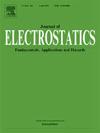常压下流光放电诱导等离子体化学的研究进展:关键机制和未来展望
IF 2.1
4区 工程技术
Q3 ENGINEERING, ELECTRICAL & ELECTRONIC
引用次数: 0
摘要
本文综述了大气中主要由飘带排放物引起的化学反应,重点介绍了它们的物理参数、自由基形成和建模方法。虽然为了进行基本的比较,也包括了一些低压排放的参考资料,但中心的重点仍然是近大气条件。关键的物理参数,如电场强度、拖缆传播速度和二次拖缆特性,在化学路径的设计中起着至关重要的作用。分析了不同的建模方法,特别是将放电动力学与化学反应模拟相结合的建模方法,强调了它们的优点和局限性。在计算技术和实验诊断方面的最新进展,使人们对拖缆排放中发生的主要和次要反应有了更深入的了解。讨论了气体成分、湿度、电压波形和界面对反应机理的影响。还探讨了等离子体-液体相互作用、多尺度建模和人工智能在放电模拟中的应用等新兴研究趋势。通过系统地分析潜在的化学动力学,本工作旨在提高对流诱导等离子体化学及其潜在应用的理解。本文章由计算机程序翻译,如有差异,请以英文原文为准。
A review of streamer discharge-induced plasma chemistry at atmospheric pressure: Key mechanisms and future perspectives
This review examines the chemical reactions induced primarily by streamer discharges in atmospheric air, focusing on their physical parameters, radical formation, and modeling approaches. Although some references to low-pressure discharges are included for fundamental comparisons, the central emphasis remains on near-atmospheric conditions. Key physical parameters such as electric field strength, streamer propagation velocity and secondary streamer characteristics play a critical role in the design of the chemical pathways. Different modelling approaches, in particular those coupling discharge dynamics with chemical reaction simulations, are analyzed to highlight their advantages and limitations. Recent advances in computational techniques and experimental diagnostics have provided deeper insights into the primary and secondary reactions that occur in streamer discharges. The effects of gas composition, humidity, voltage waveforms and interfaces on reaction mechanisms are also discussed. Emerging research trends such as plasma-liquid interactions, multi-scale modelling and the application of artificial intelligence to discharge simulations are also explored. By systematically analyzing the underlying chemical kinetics, this work aims to improve the understanding of streamer-induced plasma chemistry and its potential applications.
求助全文
通过发布文献求助,成功后即可免费获取论文全文。
去求助
来源期刊

Journal of Electrostatics
工程技术-工程:电子与电气
CiteScore
4.00
自引率
11.10%
发文量
81
审稿时长
49 days
期刊介绍:
The Journal of Electrostatics is the leading forum for publishing research findings that advance knowledge in the field of electrostatics. We invite submissions in the following areas:
Electrostatic charge separation processes.
Electrostatic manipulation of particles, droplets, and biological cells.
Electrostatically driven or controlled fluid flow.
Electrostatics in the gas phase.
 求助内容:
求助内容: 应助结果提醒方式:
应助结果提醒方式:


